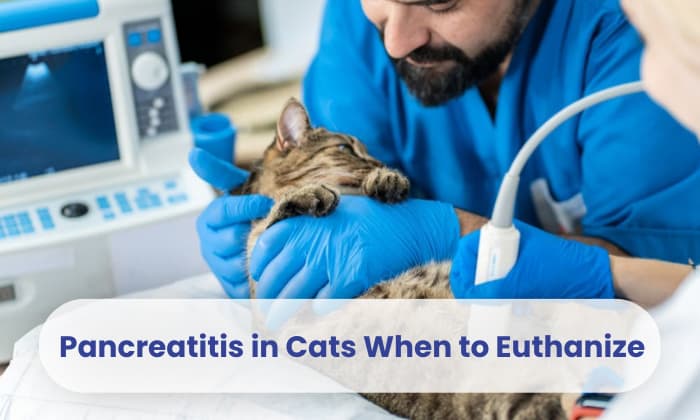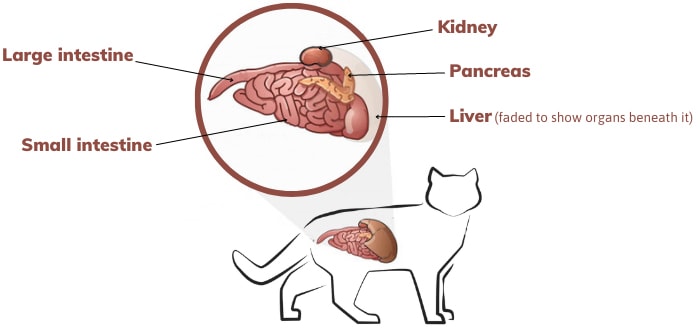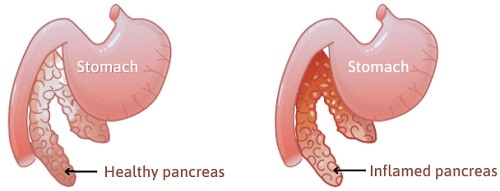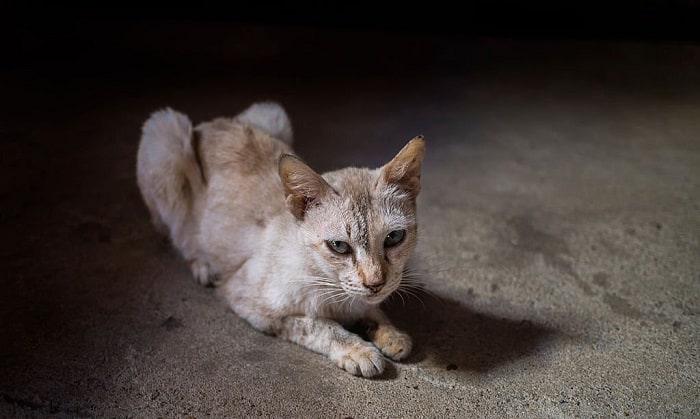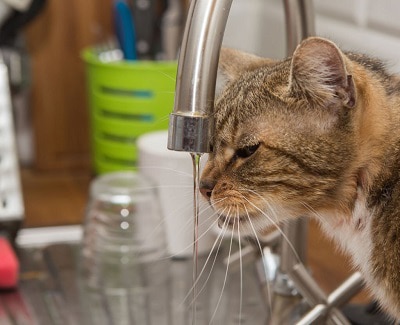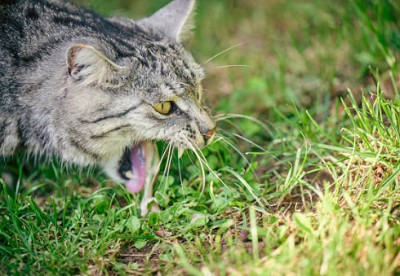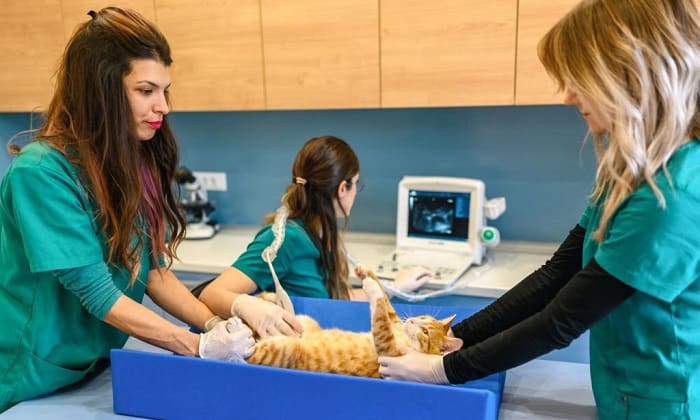Despite being sometimes regarded as unbothered yet sophisticated creatures, our feline babies can still be affected by pancreatitis.
Pancreatitis is a severe condition in cats that can cause pancreas inflammation, leading to a range of symptoms, including loss of appetite, vomiting, diarrhea, abdominal pain, and lethargy.
And to answer the dilemma: “pancreatitis in cats when to euthanize,” it will always depend on the severity of the condition, the cat’s overall health, and their quality of life. In some cases, treatment may be successful, and the cat may recover fully.
However, in other cases, despite treatment, the cat may continue to be in severe pain, it could be that euthanasia may be the kindest option.
Table of Contents
Answering the Feline Moral Dilemma in Detail
1. What Is Pancreatitis?
Before delving deeper into the core and specifics, let us first explain the organ concerned. Pancreas—an organ near the stomach that produces hormones and enzymes that aid digestion.
The pancreas is an essential organ for cats. It helps them digest food by producing special enzymes and hormones like insulin, which are vital for regulating their blood sugar levels.
Basically, the pancreas is a crucial player in keeping our furry friends happy and healthy!
However, when their little pancreas becomes inflamed, it can cause various problems, including pain, discomfort, and digestive issues.
Here comes pancreatitis—a severe condition in cats that can cause pancreas inflammation, leading to a range of symptoms, including loss of appetite, vomiting, diarrhea, abdominal pain, and lethargy.
If not immediately attended to, it can be a severe condition that could even put our feline friend’s life at risk (poor Mr. Tabby, the cat…).
2. The causes of pancreatitis in cats
As of writing, there is no conclusive and apparent reason or exact cause why some cats develop pancreatic diseases.
However, numerous studies have associated that cat pancreatitis can be caused by various factors, including obesity, a high-fat diet, certain medications, infections, trauma, and underlying health issues such as inflammatory bowel disease (IBD) or diabetes.
Regardless of the cause, cat pancreatitis can be a serious condition requiring prompt medical attention.
Symptoms and Signs of Pancreatitis in Cats
Pancreatitis in cats can be classified as either acute or chronic. While the clinical signs for both forms can be similar, cats with acute pancreatitis typically experience more rapid and severe symptoms compared to cats with chronic pancreatitis.
Well, here are some common symptoms of pancreatitis in cats:
- Loss of appetite or decreased appetite
- Vomiting
- Diarrhea
- Abdominal pain or discomfort
- Lethargy or weakness
- Dehydration
- Weight loss
- Jaundice (yellowing of the skin and eyes)
- Increased heart rate
- Difficulty breathing
- Fever
- Hiding or reluctance to move or be touched
It’s important to note that not all felines with pancreatitis will display all of these symptoms, and some may show only mild symptoms. In some cases, pancreatitis can also cause more serious complications, such as sepsis, shock, or organ failure.
Treatment For Pancreatitis In Cats
So, when it comes to treating pancreatitis in cats, the approach will always vary depending on how severe the condition is and the kitty cat’s overall health.
In some cases, a brief period of fasting followed by a carefully controlled diet and medication can be enough to manage mild symptoms. However, in severe cases, your cat may need to be hospitalized for more intensive care.
And there are three main goals that your pet’s veterinarian aims to achieve: checking your cat’s hydration level, nausea and pain management, and nutritional support.
1. Checking Your Cat’s Hydration Level
Hydration is vital in treating feline pancreatitis because cats can get dehydrated quickly, affecting their blood pressure.
So if your cat is dehydrated, it’ll need to get fluids through an IV at the hospital. But if it’s not as severe, they can get subcutaneous fluids at the vet’s office or home.
2. Nausea and Pain Management
Anti-nausea meds are also necessary because even if your cat isn’t vomiting, it may still feel nauseous, making them not want to eat.
Maropitant (Cerenia) is a common medication used for this and can also help with abdominal pain. If your cat needs pain relief, it may be prescribed opioids like buprenorphine.
Antibiotics may also be prescribed if there’s a risk of bacterial infection, and other medications like anti-nausea drugs or appetite stimulants can be used as needed.
3. Nutritional Support
Getting Ms. Dixie, the cat, back to eating as soon as possible is crucial in treating pancreatitis because the sooner they start eating, the better their chances are for a full recovery.
If anti-nausea and pain meds don’t help with appetite, appetite stimulants like mirtazapine may be used. If that doesn’t work, the vet may put in a feeding tube to deliver food directly to the stomach.
This is really important because prolonged anorexia can cause other problems like hepatic lipidosis.
While treatment can be successful in some cases, it’s essential to remember that it can be a severe condition. Some cats may experience recurrent episodes or complications despite treatment.
How Long Can a Cat Live With Pancreatitis?
The life expectancy of a feline with a pancreatic disease can vary depending on the severity of the case and how quickly it is diagnosed and treated.
Mild to moderate cases may have a good prognosis. A cat can recover within a few days to weeks, while severe cases could be fatal if not treated promptly.
In the end, working closely with your furbaby’s veterinarian is recommended to manage the condition and provide appropriate treatment options to give your cat the soundest chance at recovery.
The Time to Consider Euthanasia for a Cat With Pancreatitis
Putting down a cat with pancreatitis can be a difficult and emotional decision.
In general, euthanasia may be considered when the cat’s quality of life is significantly and irreversibly impacted by the disease, despite all attempts at treatment and management and the recovery time spent.
Possible indications that it may be time to consider euthanasia for a cat with pancreatitis include:
- Persistent vomiting and/or diarrhea that cannot be managed with treatment
- Refusal to eat and/or severe weight loss
- Severe dehydration and electrolyte imbalances
- Inability to control pain or other symptoms
- Complications from the disease that cannot be resolved, such as liver failure or sepsis
When considering euthanasia for your cat with pancreatitis, having an open and honest chat with your vet about your cat’s condition and quality of life is significant.
Your vet can provide guidance and support during this challenging time, which can help you make the best decision for your beloved pet.
Ultimately, you and your vet should work together to determine your cat’s best interest and treat them compassionately.
Frequently Asked Questions
Can A Cat Recover From Severe Pancreatitis?
It’s possible for cats to recover from severe pancreatitis. Still, the prognosis varies widely depending on the severity of the disease and the cat’s overall health.
Prompt and appropriate treatment is crucial, and some cats may not survive the disease despite treatment. Close monitoring and veterinary care can help give cats the best chance of recovery.
What Are Some Tips To Prevent Pancreatitis In Cats
Here’s a summary of tips to help prevent cat pancreatic diseases:
- Feed a balanced diet appropriate for your cat’s needs, and avoid feeding table scraps or high-fat human foods.
- Keep your cat at a healthy weight
- Provide fresh water and limit exposure to toxins.
- Schedule regular wellness exams with your veterinarian.
- Avoid sudden changes to your cat’s routine or diet.
If you have plenty of cats at home, have a different diet or food for your cat with pancreatitis.
What To Do When A Cat With Pancreatitis Is Not Eating?
When a cat with pancreatitis is not eating, it’s essential to consult a veterinarian as soon as possible to address the underlying cause and prevent complications.
The vet may recommend different feline pancreatitis treatments or appetite stimulants or feeding tubes to ensure the cat receives proper nutrition.
Conclusion
In conclusion, caring for a cat with pancreatitis requires careful monitoring, timely diagnosis, and appropriate treatment.
It is essential to work closely with your veterinarian to ensure your furry angel receives the best possible care. While pancreatitis can be a serious condition, with proper care and management, cats with this condition can live for many years and still enjoy a good quality of life!
If you suspect your cat may suffer from pancreatitis, don’t hesitate to seek immediate veterinary care. We hope we helped you answer your queries in this moral dilemma about pancreatitis in cats when to euthanize.

I am Amy Sawy, a Doctor of Veterinary Medicine (DVM) graduate from the University of Kansas. y husband, Dr. Plummer, and I own a veterinary clinic in Phillipsburg, Kansas. In addition to my professional background, I am a devoted pet owner myself, with a household that includes dogs, rodents, and most notably, cats – a total of five felines in my home.
In 2020, I joined an organization as a professional writer, leveraging my experience and collaborating with my team to deliver the most valuable information for your cat’s care.


